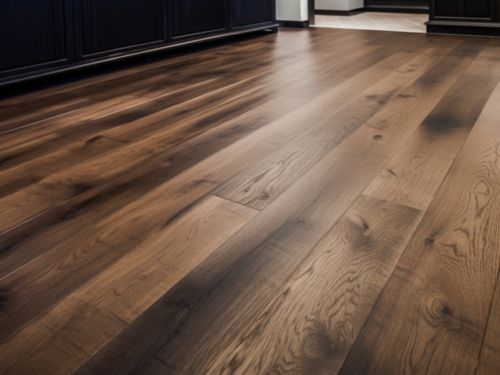
Do you put anything between subfloor and hardwood?
If you’re in the middle of planning a hardwood flooring installation, then you might be wondering: Do you put anything between subfloor and hardwood? This is a common question that many people ask. Skipping the subfloor could save you money and time – so if it’s not necessary, then why bother?
Unfortunately, this might not be the best way to look at things. Let’s break it down.
Do you put anything between subfloor and hardwood?
When installing hardwood flooring, it is important to have a solid and stable base. This is where the subfloor comes in. The subfloor is the layer of material that lies on top of the joists and below the hardwood. However, installing a subfloor alone is not enough. A barrier between the subfloor and hardwood is also essential to ensure a long-lasting and successful floor installation.
Why do you need something between subfloor and hardwood?
- Moisture prevention: One of the main reasons why a barrier is needed between the subfloor and hardwood is to prevent moisture from damaging the hardwood. Moisture can easily penetrate the subfloor, which can result in warping, cupping, and splitting of the hardwood. A moisture barrier such as a felt paper, rosin paper, or a moisture-retarding underlay can reduce the risk of moisture-related issues.
- Noise reduction: Another reason why a barrier is necessary is to reduce the amount of noise that hardwood flooring can produce. Hardwood flooring has a tendency to produce a lot of squeaks and creaks when walked on. The movement of the wood fibers and friction caused by rubbing can lead to these sounds. By installing a barrier, such as a cork or foam underlay, you can reduce the amount of noise that is produced, giving you a more peaceful and quiet home.
- Energy efficiency: A barrier can also help to improve the energy efficiency of your home. By adding an underlay that provides an additional thermal layer, such as cork or foam, you can reduce heat loss through the floor. This can ultimately help you save money on your energy bill and create a more comfortable living space.
- Hide imperfections: Furthermore, a barrier can help to level out any slight imperfections in the subfloor. This is because most underlay materials can mold to the contours of the surface they are placed upon. By using a barrier, you can ensure that your hardwood floor lies flat and smooth, reducing the likelihood of tripping or uneven wear over time.


